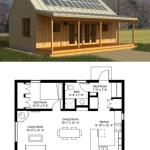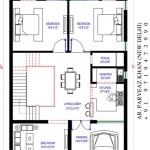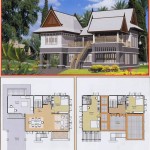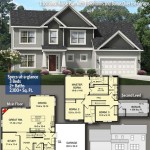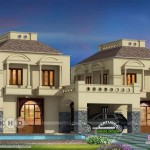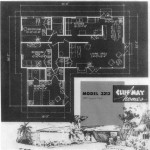Spanish Hacienda Floor Plans: The Enduring Allure of Courtyards
Spanish haciendas, historically large estates, are renowned for their architectural beauty and practical design. A central element of these structures is the courtyard. The courtyard is not merely an aesthetic addition; it is an integral component that contributes to the hacienda's functionality, climate control, and overall aesthetic. Understanding the floor plans of Spanish haciendas, particularly the significance of the courtyard, provides insights into the lifestyle and cultural values of the historical period.
The hacienda evolved as a self-sufficient agricultural and residential center. These properties were prevalent across the Spanish colonial territories of Latin America and the Southwestern United States. Their designs reflected a blend of Spanish architectural traditions adapted to the local environment and available resources. The courtyard served as the heart of the hacienda, both physically and socially.
The design of hacienda floor plans varied depending on the specific region, climate, and economic status of the owner. However, certain characteristics remained consistent. These included thick adobe walls for insulation, tiled roofs, and, most importantly, the central courtyard accessible from various points within the hacienda.
The Central Role of the Courtyard
The courtyard in a Spanish hacienda floor plan performs multiple crucial functions. It is not just an open space; it is an active component contributing to the functionality and aesthetic of the overall structure.
Firstly, the courtyard provides natural light and ventilation. Adobe walls, while excellent for insulation, can restrict the flow of light and air. The courtyard allows sunlight to penetrate the interior spaces, brightening the rooms and reducing the need for artificial lighting. The open space also facilitates cross-ventilation, helping to regulate the temperature inside the hacienda, especially important in hot climates. The strategic placement of windows and doorways around the courtyard allows for a natural airflow pattern, creating a more comfortable living environment.
Secondly, the courtyard acts as a private outdoor living space. Enclosed by the hacienda's walls, it offers a secure and secluded area for relaxation, recreation, and social gatherings. Often, courtyards were landscaped with gardens, fountains, and other decorative elements, enhancing their aesthetic appeal and providing a tranquil oasis. The courtyard becomes an extension of the living space, allowing residents to enjoy the outdoors while maintaining privacy. This feature was particularly important in areas where security was a concern.
Thirdly, the courtyard facilitates circulation and organization within the hacienda. It serves as a central hub, connecting different sections of the house. Rooms are typically arranged around the courtyard, with doorways opening onto it. This arrangement creates a logical and intuitive flow, making it easy to navigate the hacienda. The courtyard also allows for a clear separation of different functions within the hacienda, such as residential areas, storage spaces, and workshops. This clear organization contributes to the overall efficiency and functionality of the hacienda.
Variations in Courtyard Design
While the basic concept of the courtyard remained consistent, its design varied based on regional influences and the owner’s preferences. These variations affected the size, shape, materials, and landscaping of the courtyard.
In some haciendas, the courtyard was large and elaborate, featuring ornate fountains, intricate tile work, and lush gardens. These courtyards were often designed to impress and showcase the owner's wealth and status. The landscaping often included native plants, carefully selected to thrive in the local climate. In other haciendas, the courtyard was simpler and more functional, serving primarily as a space for daily activities such as laundry or food preparation. These courtyards might have featured a well, a cooking area, or a simple seating area. The materials used in the courtyard's construction also varied depending on the availability of local resources. Stone, brick, and adobe were all common materials.
The shape of the courtyard could also vary. While square or rectangular courtyards were the most common, some haciendas featured L-shaped or even circular courtyards. The shape of the courtyard often depended on the overall layout of the hacienda and the topography of the land. Regardless of the shape, the courtyard always maintained its central role as a source of light, ventilation, and private outdoor space.
The incorporation of architectural elements such as arcades and porticos around the courtyard's perimeter further enhanced its functionality and aesthetic appeal. Arcades provided covered walkways, protecting residents from the sun and rain. Porticos offered shaded seating areas, allowing for comfortable outdoor living. These elements added to the overall elegance and sophistication of the hacienda.
Key Elements Within the Hacienda Floor Plan
Beyond the courtyard, other key elements contribute to the overall character and functionality of Spanish hacienda floor plans. These elements reflect the self-sufficient nature of these estates and the social hierarchy that existed within them.
Firstly, the “casa principal” or main house, typically occupied the most prominent position within the hacienda complex. This structure housed the owner's family and often included formal living areas, dining rooms, bedrooms, and offices. The casa principal was usually the most elaborately decorated part of the hacienda, reflecting the owner's status and wealth. It often featured high ceilings, large windows, and ornate details. The placement of the casa principal relative to the courtyard was carefully considered, often providing direct access and views of the open space.
Secondly, outbuildings were essential components of the hacienda floor plan. These structures included barns, stables, workshops, storage areas, and quarters for workers. The number and size of the outbuildings depended on the type and scale of agricultural activities undertaken on the hacienda. These buildings were typically located around the perimeter of the hacienda complex, separated from the main house but still easily accessible. The layout of the outbuildings was designed to optimize efficiency and functionality, allowing for the smooth operation of the hacienda's agricultural activities.
Thirdly, the chapel was a common feature in many Spanish haciendas, reflecting the importance of religion in the daily lives of the residents. The chapel provided a space for worship and religious ceremonies. It was often located near the main house or within the courtyard. The chapel's design varied from simple, rustic structures to elaborate, ornate buildings. Regardless of its size or style, the chapel served as a reminder of the importance of faith and spiritual life within the hacienda community.
The integration of these key elements, arranged around the central courtyard, created a cohesive and functional living environment that reflected the unique lifestyle and cultural values of the Spanish hacienda era. The floor plans were carefully designed to maximize efficiency, comfort, and social interaction, making the hacienda a truly self-sufficient and thriving community.
The enduring appeal of Spanish hacienda floor plans lies in their ability to seamlessly blend functionality, aesthetics, and a deep connection to the environment. The central courtyard remains a testament to the ingenuity of Spanish colonial architecture and its enduring influence on residential design.
Understanding the nuances of Spanish hacienda floor plans offers a valuable perspective on the historical context and architectural principles that shaped these remarkable structures. The integration of natural light, ventilation, and private outdoor space, combined with a clear organizational structure, continues to inspire contemporary architects and designers.

208150814000325060 Bungalow Courtyard Home Plan Hacienda Style Com Interior House Plans Mediterranean

46 Trendy House Plans With Courtyard Spanish Style Court Yard Dream

Mediterranean Style House Plan 4 Beds 3 5 Baths 3163 Sq Ft 72 177 Plans Courtyard Southwest

Spanish Courtyard Home Plan 42828mj Architectural Designs House Plans

3 Bed Spanish Style House Plan With Front Courtyard 46072hc Architectural Designs Plans

Must See Grand Old World Charm Spanish Style Home With Courtyard Floor Plan House Plans Homes

Plan 36118tx Central Courtyard Dream Home House Plans Spanish

Four Bedroom In Spanish Revival Style

Hacienda Courtyard House Plans

Build A House With Courtyard Blog Dreamhomesource Com


